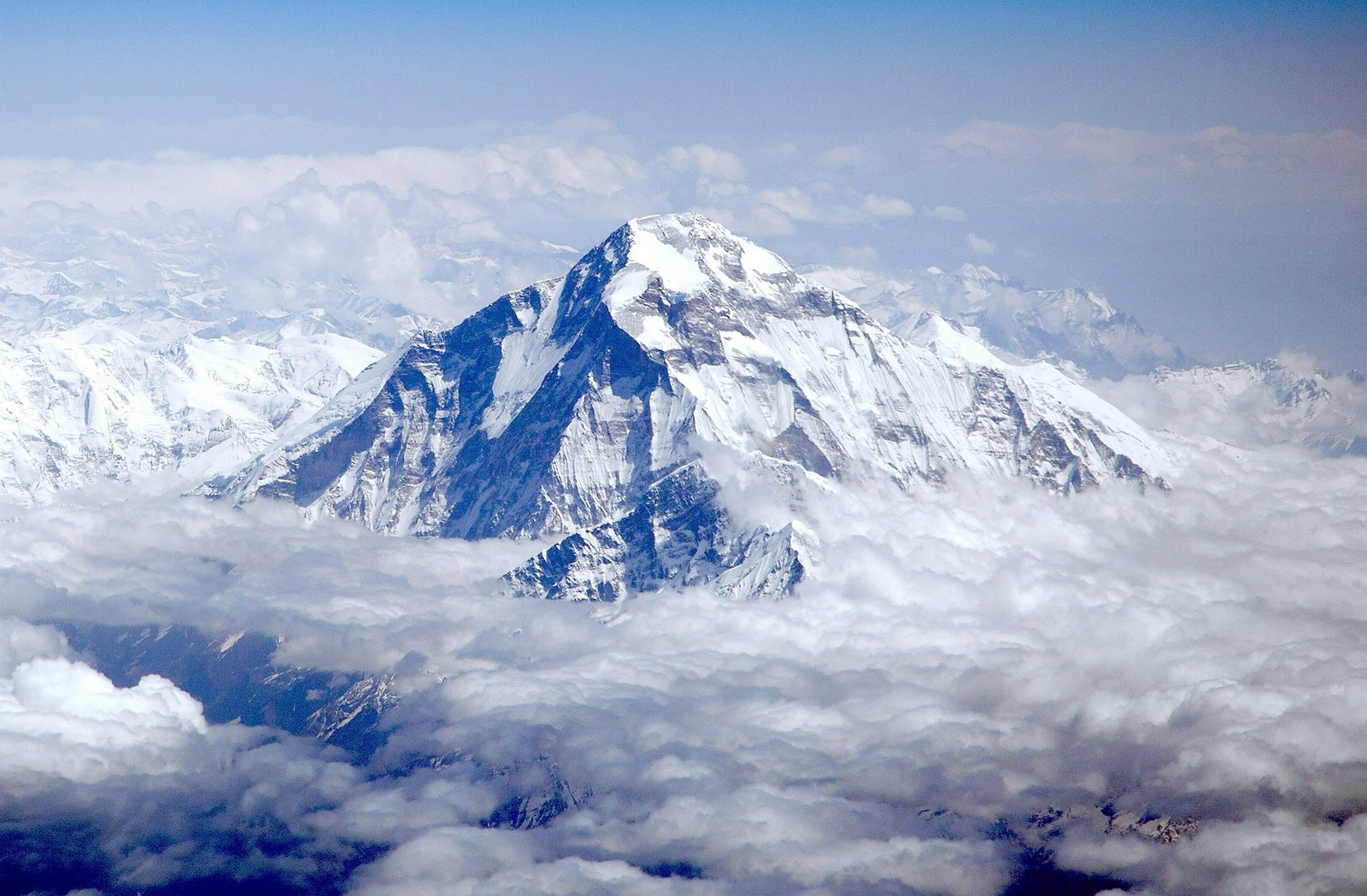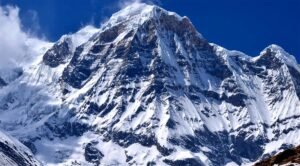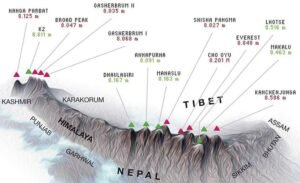Table of Contents
ToggleIntroduction:
Dhaulagiri, 8,167 meters (26,795 ft) The seventh highest mountain in the world is also among most striking peaks of the Himalaya. Nicknamed the “White Mountain,” Dhaulagiri is a compound word formed from ‘Dhavala,’ meaning white and ‘giri,’ meaning mountain in Sanskrit. With its razor sharp and snow-covered ridges, huge glaciers Nuptse is a dramatic sight which contrasts with many Himalayan giants, and it rises dramatically over the town of Lobuje in north-central Nepal.
As we have said, Dhaulagiri is not only beautiful but extremely dangerous to climb. Is esteemed to offer adventurous alpinists a considerable technical challenge, changeable conditions and hazardous avalanche slopes. Dhaulagiri is an artificially perfect adventure tale that can only be lived out by those who dare to tread at the highest altitudes.
In this blog, you’ll learn of the attraction and struggles of climbing in Dhaulagiri as well as get great historical information with many years of insights. Whether you are a beginner looking to one day climb this colossal terrain, an accomplished mountaineer in your own right or simply somebody who has fascination with the big mountains, this ultimate guide to Dhaulagiri provides all the insights necessary for understanding and appreciating one of Nepal’s most legendary peaks.
01. The Geography of Dhaulagiri
Dhaulagiri I is the highest mountain located entirely within the country of Nepal. Dhaulagiri is part of one of the largest section in the Himalayas, most formidably a longish string that goes through Nepal, following southhwest-to-northeast direction along deep Iris between Annapurna and Dhaulagari Enclosed by abyssal glacial valleys and steep ice- clad mountains off which he peaks for over 1,500 m elevations proper.
It lies just to the northwest of Annapurna, only separated by the startlingly deep gorge of Kali Gandaki draining between the two. Given the distinctive shape of this mountain, and its location overlooking a deep valley floor, Dhaulagiri stands out from miles around and is one of the most dramatic peaks in the region.
The Dhaulagiri massif also consists of several other important summits, like Dhaulagiri II (7,751 meters.), Dhaulagiri III is 7,715 meters., Dhaulagiri IV is 7.618 meters. and Dhulagheri V is 7.618 meters. But, Dhaulagiri I is the highest and best known of this group luring climbers and enthusiasts from every nook and corner of the world.
The mountain is famous for its almost vertical slopes and seracs that put off even world class mountaineers from climbing it. Dhaulagiri’s south face, in particular, is a peak just shy of 45 degrees with thousands of feet of almost continuous rock and ice above.
02. The Ascents of Dhaulagiri — A Historical Overview
Dhaulagiri was first climbed on May 13, 1960 by a Swiss/Austrian/Nepali expedition led by Max Eiselin. Among the team were some of the most famous climbers of their time including Kurt Diemberger and Peter Habeler. They chose the same northeast ridge route that remains the most popularly climbed route to the summit today.
Dhaulagiri’s first ascent is significant because the Pilatus Porter bushplane for the flight to a higher base camp. It would become one of the first uses of aircraft in an effort to rescue climbers, although the plane would later crash, setting a dramatic tone for the story. Luckily, #werestillalive and the party pressed on reaching the summit.
Despite subsequently being climbed by numerous routes, Dhaulagiri is known as one of the less active 8,000-meter peaks for climbers (compared with speeds on Everest and Manaslu) This is partially a result of its technical difficulty to climb, and the frequent avalanches have killed numerous climbers over the years.
03. Dhaulagiri Climbing Route
Many routes exist to the summit, but only two of them are mostly attempted which is from northeast ridge and northwest ridge. They were either through difficult routes, demanding high-level mountaineering skills, acclimatization and preparation. Here are some of the main routes to Dhaulagiri Top:
1. The Northeast Ridge
The Northeast Ridge is the more traditional route for most climbers attempted Dhaulagiri. This route is a little more straightforward than the only other route to the summit, using the 1960 Swiss-Austrian expedition traverse and being seen as one of lesser techniques in comparison but still comes across very technical.
Climbs usually start from Base Camp at around 4,750 meters (15,580 feet). Beyond that, climbers ascend through a number of camps with Camp 1 at about 5,900 m (19,356 ft), Camp 2 located at around 6,400 m (20,998 ft) and Camp 3 at about 7,200 m (23,622 ft).
This part of the peak has steep ice and snow slopes, as well as exposed ridges, crevasses. The route involves a mixture of ice climbing skill and the ability to move fast at altitude. It is a long and difficult day of climbing, with many climbers starting out sometime between 11 P.M. and 3 A.M so that they have the best chance to summit and get down before it gets dark.
2. The Northwest Ridge
Less frequently ascended than the Northeast Ridge, the Northwest Ridge is a more technical line. It is more of a technical ride, with steeper rock and ice sections on the way up. The Northwest Ridge also has a higher risk of avalanches, especially early in the season when the snow is less consolidated.
Trekking this route, climbers will go through a periled crescent of ice walls and rocky faces running up to the ridge using fixed ropes on difficult climbing times. The Dhaulagiri is more or less considered a moderate difficulty level mountain with the exception of the Northwest Ridge which is one of the harder routes on this peak and only experienced climbers should give it a try
3. Other Routes
Along with these two principal highways, a variety of lesser routes also have been ventured by climbers through the years. Some of these are the Southwest Face, Southeast Ridge, and East Face. The routes themselves are very trying and only a few successful ascents have been recorded due to the technical challenges and high objective hazards such as avalanches and rock fall.
04. Challenges of Climbing Dhaulagiri
Dhulagiri is not like going through no mean place. Steep and weather-beaten, this 8,000-meter peak poses some of the most difficult climbing conditions in such high altitude. The following are among the primary obstacles that climbers must overcome in order to successfully summit on Dhaulagiri:
1. Technical Difficulty
The normal route to Dhaulagiri is nowhere near as technical as some of the harder Himalayan peaks, such as K2, but is still a serious mountaineering challenge. Climbers should have ice, glacier and crevasse rescue experience. The terrain involves a steep snow and ice route for which fixed lines are usually used to keep everyone safe.
The last push to base camp is a combination of narrow, individual ridge lines above abysses and traversing deep snow on one foot ahead of the other); it’s draining physically and mentally. Not to mention the extreme altitude, which requires climbers to be in those peak performance levels of physical condition in order to meet the rigors of the climb.
2. Avalanche Risk
One of the biggest dangers to climbing Dhaulagiri are avalanches, especially at the start of the season when snow conditions are in a flux. Avalanches on the ice-capped volcano are common though not major problems; the mountain’s steep slopes and abundance of snow make it amenable to their formation, often without warning.
Over the years, numerous climbers have perished to avalanche incidents on it, and it remains one of the most deadly hazards on the mountain. Climbers must be vigilant about snow conditions and make informed decisions based on consultation with experienced guides as to the risks they should take.
3. Weather Conditions
Weather: As with all the Himalayan mountains, this mountain is susceptible to very volatile weather. Climbing conditions can be extremely dangerous with high winds, heavy snowfalls and sudden storms and climbers may be forced to wait for weeks during periods when the weather is so extreme that a summit attempt would not even be considered.
The cold, high-altitude environment also potentially results in frostbite and other cold-weather related injuries. There is a very real need for proper gear and preparation as much of this expedition protects from the brutal weather conditions on Dhaulagiri,
4. Altitude
The eight-thousander Dhaulagiri is located in the “death zone,” which extends beyond 8,000 meters and has low oxygen concentrations that can only sustain human life temporarily. Acute mountains sickness that is potentially fatal if unmanaged) because climbers need to acclimate properly to the altitude.
This generally involves several weeks spent going up and down the mountain to get your body to adjust to the rarefied air. Nearly all climbers will use supplemental oxygen for the summit push, but a few select accomplished alpinists have reached the top of Dhaulagiri without oxygen.
05. Getting in shape — physically and attitude wise, for climbing
Scaling Dhaulagiri requires months of preparation work, if not years. Training from preparatory to mental conditioning, everything is significant in a tedious climb. It’s what you need to do and take with you when preparing for a climb of this grandeur:
1. Physical Training
This mountain is one of the most difficult and physically demanding mountains to climb, so climbers must be in excellent physical health to even make a successful bid. All of those long days of climbing, all the weight and high altitude… it adds up. They should work on strength, endurance and cardiovascular training. Likewise, climbers need to practice using gear such as crampons, harnesses and ice axes so they are comfortable with the technical aspects of the climb.
Besides regular hikes with weighted backpacks, long-distance running and high altitude training, are also important during the period of preparation. Climbers should learn to use an ice axe and crampons, in addition it is also advisable to practice climbing on snow and ice so that you have the skills necessary for the technical sections of the route.
2. Acclimatization
You accilimatize when you climb an 8,000-meter peak. At that altitude, they run the risk of altitude sickness and have to spend a certain amount of time at higher elevations so their bodies can acclimate to the thinner air. On most Dhaulagiri expeditions there are multiple acclimatization rotations, in which climbers move up to higher camps before descending back to Base Camp for rest.
This acclimatization process lowers the chance of getting sick from high altitude and readies the body for that final push to the summit.
3. Mental Toughness
Scaling Dhaulagiri is as much a test of your brain as it is a trial of your muscle etc. Even the most hardened of climbers can feel the strain from isolation, extreme cold and physical exhaustion. Just as important as physical, If not as equally important to mental preparation as our ability to suffer and continue is a big part of the sport!
In addition, many climbers find that the isolation and challenge they face while climbing has enabled them to learn more about themselves. Coming so far from civilization is a unique experience, and in many cases climbers leave the Dhaulagiri absolutely changed, not only in their ability to succeed but deeply moved by the power of nature’s elements.
06. Dhaulagiri Base Camp
This trek commences with a drive from the Beni village which passes through traditional villages, terraced fields and dense forests before we reach the higher altitudes of Dhaulagiri region.
It is a beautiful trek to be in, offering views of other surrounding peaks as well as a cultural experience of the heritage of Dhaulagiri Region. The path goes through the Dhaulagiri Sanctuary, a protected area with plenty wildlife including snow leopards, hupas, and Himalayan tahr.
The last day brings you to the very base of Kilimanjaro, among glaciers and with heart-pumping rock faces over 7000 meters high. From this point climbers ascend on the mountain (approx. 4,750 meters / 15,580 feet high) to reach the Base Camp.
07. Ascending Dhaulagiri — The Summit Experience
The summit of Dhaulagiri is a thrilling and at the same time humbling experience, for those who make it. It is also a macho delight to stand in the rarefied heights on top of one of the world’s highest mountains, albeit one requiring several days of arduous, breathless climbing to attain. Annapurna, Manaslu, and an incredibly narrow corridor to the deepest gorge in the world: Kali Gandaki Gorge can be seen like nowhere else on earth from up there.
There is a powerful sensation that presents itself after standing on top of Dhaulagiri, an intense feeling of satisfaction paired with a moment of sadness because it is at this time that the mountain becomes more than just a physical endeavor; it transforms into something spiritual. The summit experience is often described in transcendent terms by climbers, a moment of literal and figurative connection to the earth and sky that cannot be expressed in words.
08. The Legacy of Dhaulagiri
Dhaulagiri is much more than just a mountain—it stands as a figure of adventure, adversity, and the unrelenting human soul. Dhaulagiri is a mountain that, when climbed, unites us with nature, challenges our boundaries, and introduces us to the very best of Himalayan beauty.
Its history is one of both great accomplishment and great loss, as well as sacrifice: thousands of climbers have died trying to reach the top. However, for those who make it through, the opportunity to summit Dhaulagiri is a one-of-a kind experience that will be as transformative as it will be humbling.
09. Descending the White Mountain
The White Mountain Dhaulagiri is a peak representing one of the greatest technical and spiritual challenges of mountaineering. But for those who can handle the harsh inclines, unpredictable weather and high-altitude conditions, the payoff is a trek fewer people will ever receive.
On the experience of climbing Dhaulagiri – Bohl, a 20-year mountaineer then said, “I would absolutely describe it as a personal journey of physical and mental resilience. Also, that this is a mountain that deserves respect and will stay with a climber for the rest of their days.
Conclusion
While Dhaulagiri can be a tough nut to crack, mountaineers in search of unadulterated adventure will not have much to complain about. A mountain that you fall in love with because of its beauty, and hate it because it is such a pain in the ass. But for those ready, it provides an entirely unparalleled experience. Dhaulagiri is so much more than just a mountain — it is an adventure deep into the heart of the Himalayas and will forever leave a mark on all those who visit.




